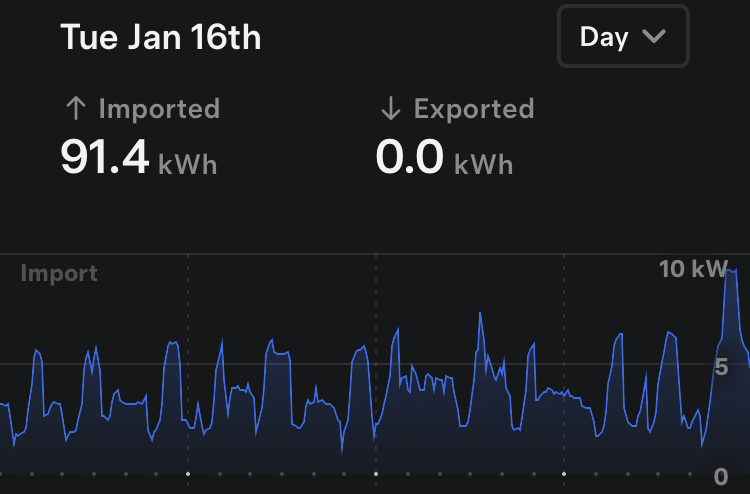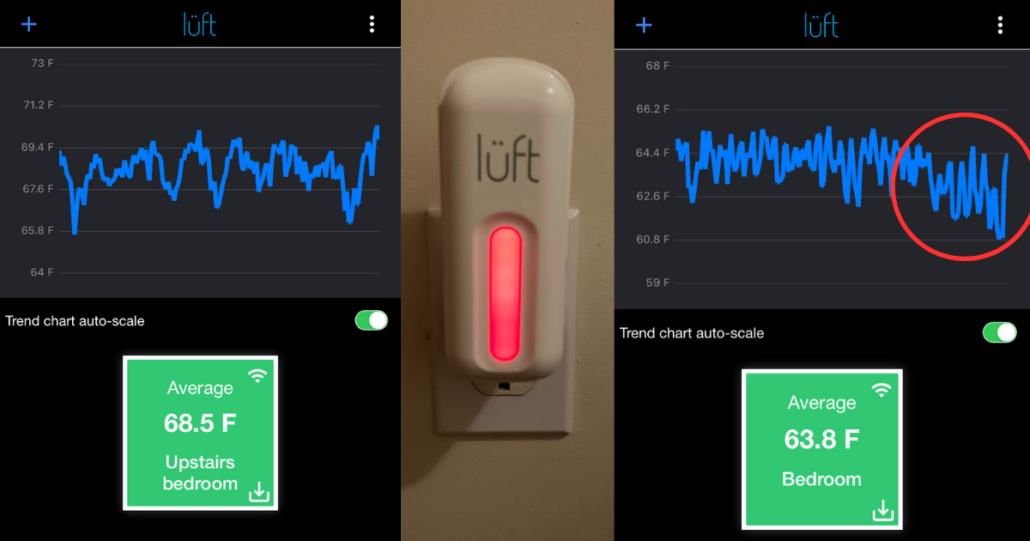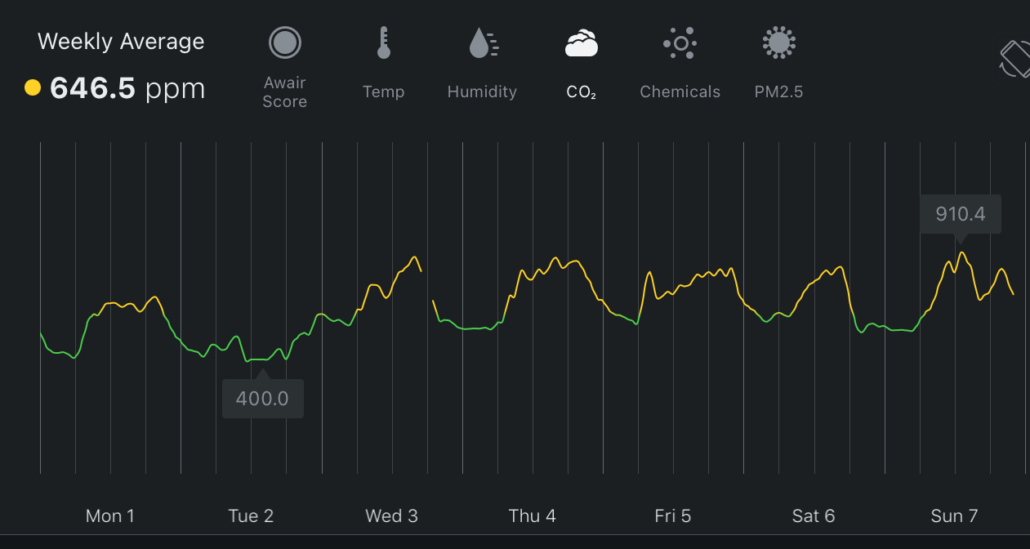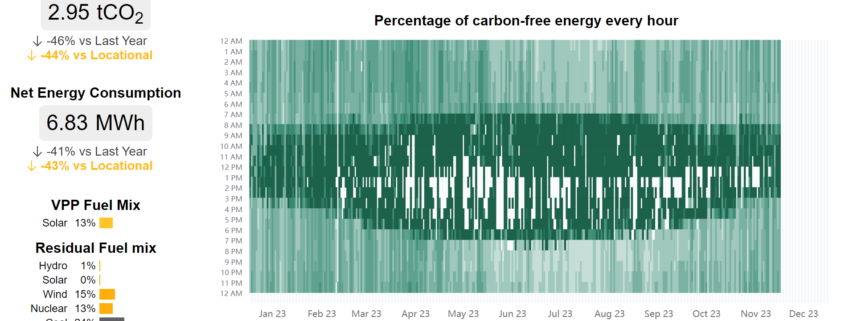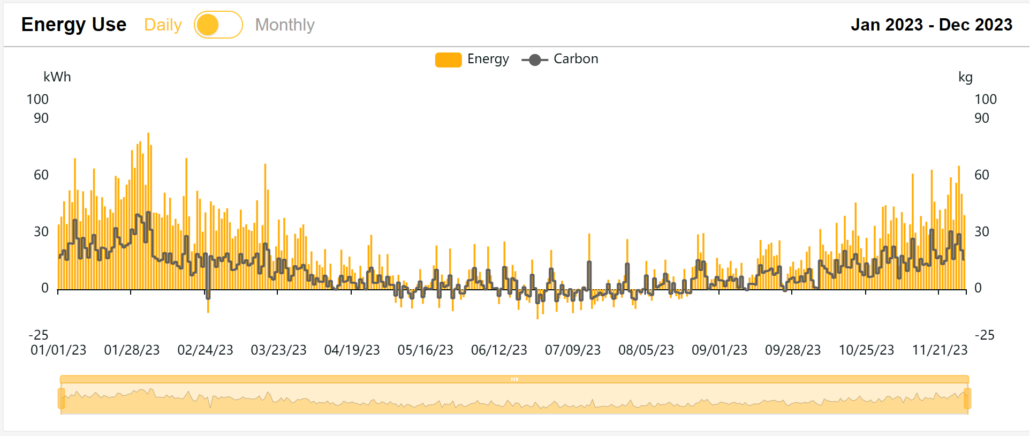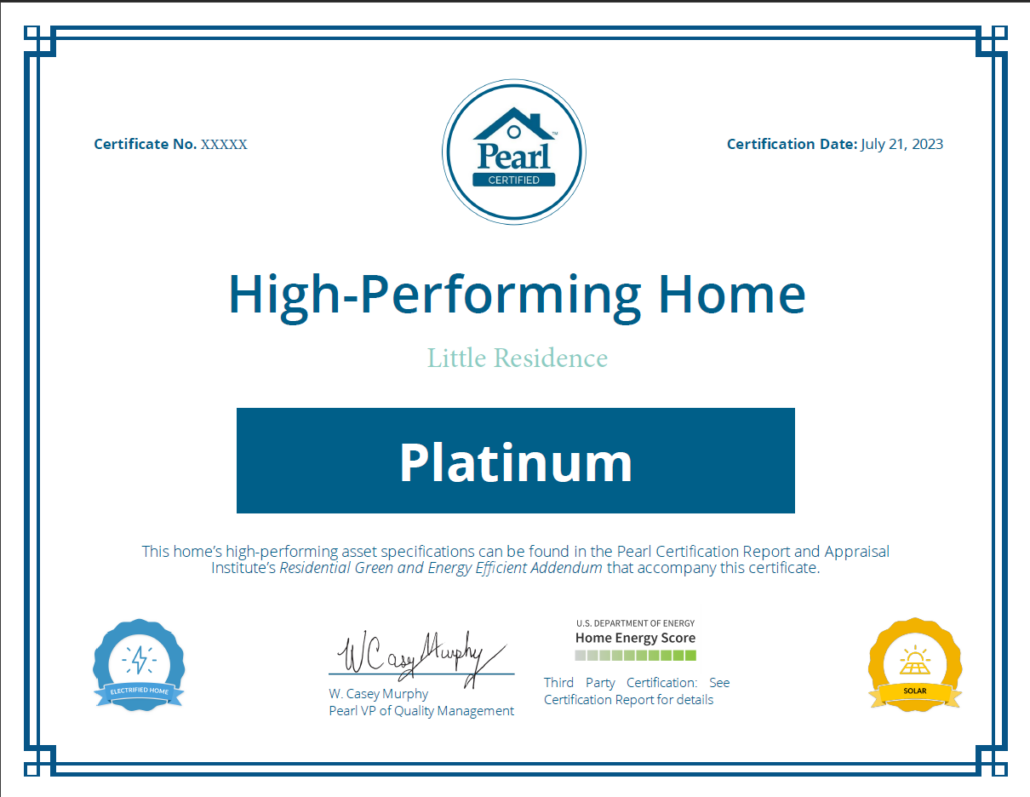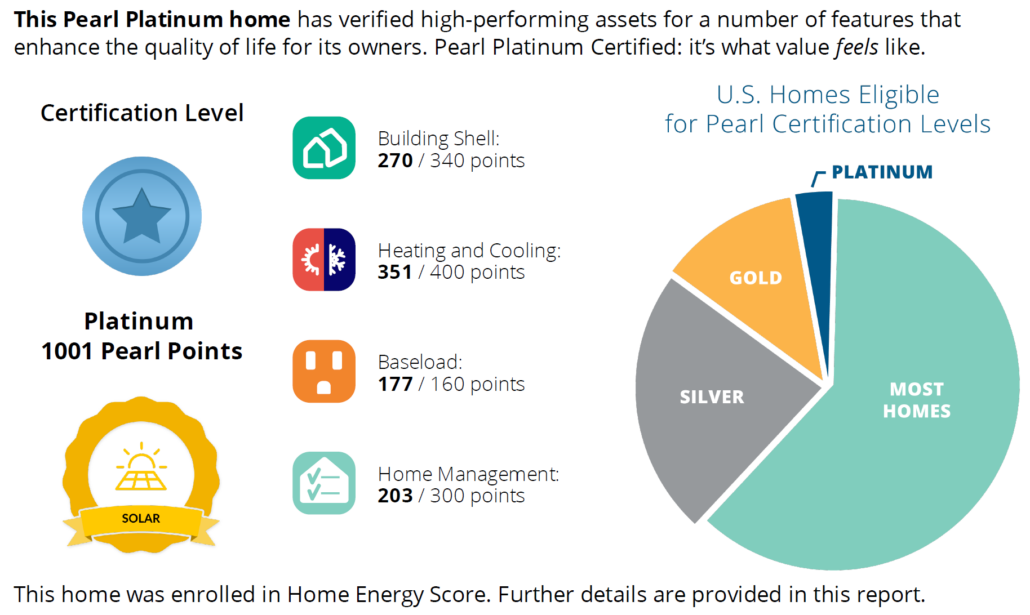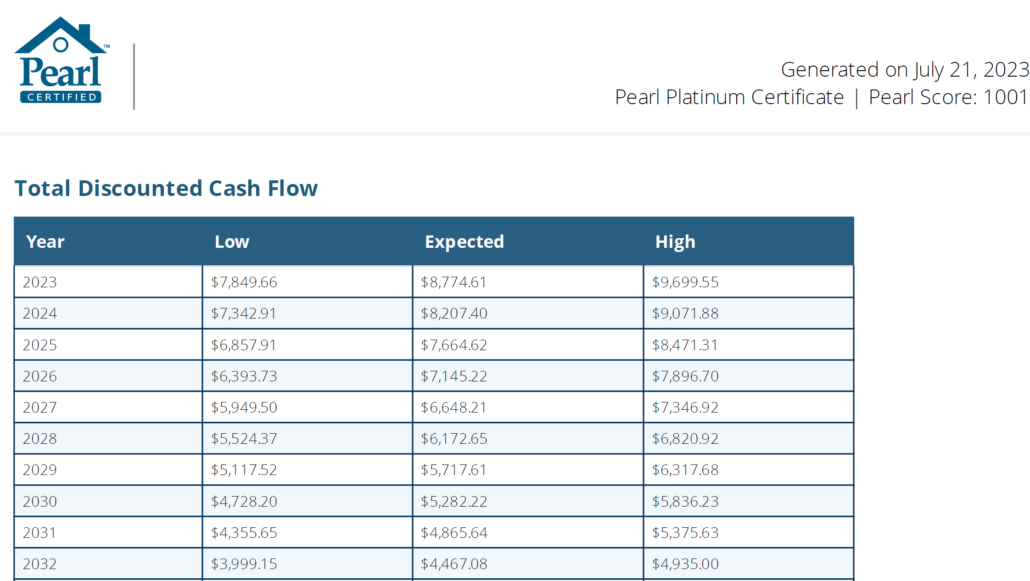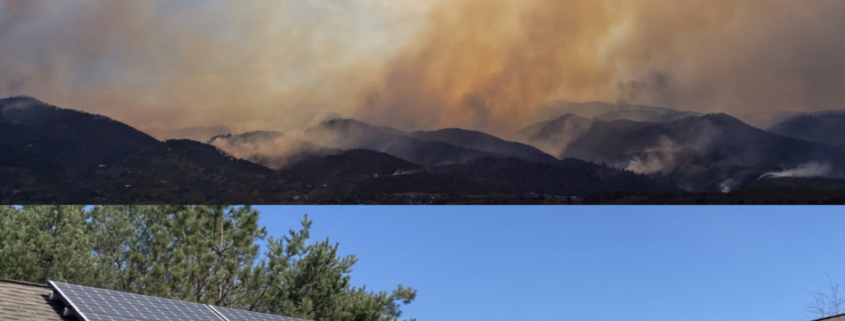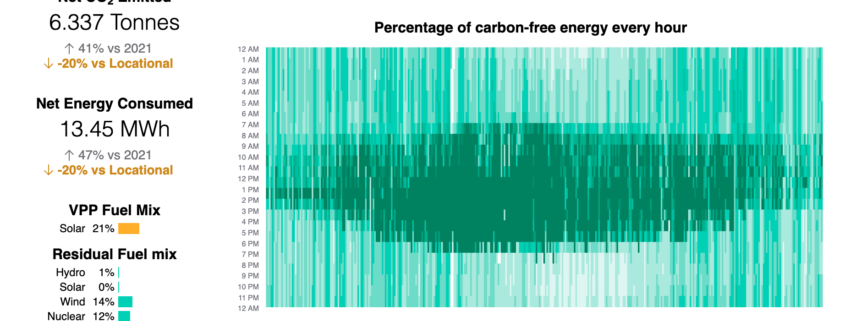GHI Education manager documents home energy and air quality data during heatwave
The heatwave here in Michigan has seemed to die down finally. How did my house fair throughout it?
Our goals were to stay safe and comfortable while shifting energy use off the 2 – 7 pm peak times. How did we do?
The heatwave lasted from Monday the 17th through Saturday the 22nd, with heat indexes going into 90 – 95 and temperatures staying in the 80s at night.
I determined these data points using real-time air quality and energy monitoring compared to the previous week in June.
- 14% more energy used
- 26% less solar produced (though a much cloudier week)
- The solar peak for the week was 3.2kW vs the previous week’s 3.6kW
- Avg Humidity 47% vs 45%
- Avg Temp 74 vs 72.5
- Peak temp 79 degrees
- CO2 858 ppm vs 620
- VOCs 759 vs 275
- Mechanical room / Crawl Dew Point: 46
- Basement Dew Point: 52
- Temps went down, but humidity increased in the heatwave compared to the previous week.
Energy usage increases highlights
- Cooling from the afternoon, sometimes till 1:30 at night
- The dehumidifier running a little longer from higher humidity
- Ran bathroom longer through the day
Energy usage decreases highlights
- Traveled less and stayed in so less car charging
- Did less cooking on an electric stove to avoid overheating
- Avoided condensing dryer usage on the last Saturday of the heatwave
- Shut down the Energy Recovery Ventilator
- Shut down the recirculating fan when the heat pump was not running.
Before reading on, you should get a better sense of my home to help you understand, though it is unnecessary.
So what explains all these numbers, and what was going on?
Before the heatwave, I prepared the house by turning down my unducted whole-home dehumidifier in the basement / finished crawlspace to 47 for humidity. That room gets pretty humid, and I am concerned about mold growth, so we are running it dry because it is drying out the entire home. Keeping the humidity low also allowed me to set the heat pump cooling from 72 to 75 degrees and remain fairly comfortable. Keeping it this low means the system runs all the time, adding about .7 kW of load to the house. The other thing I was doing before the heatwave was practicing staying off the 2 – 7 pm peak as I opted into the critical peak pricing program, which means in the event of a utility call to action, rates go way up to $1 a KwH. In exchange, they are 14% cheaper for the rest of the summer as a trade-off. To do this, I had to play an active battery management role. My battery charges up from solar in the day and then runs the house automatically from 2 – 7 while the remaining solar feeds the grid. However, the heat pump usually begins cooling around. 1:30 pm, and that, along with the dehumidifier, uses a lot of energy. So I put a timer on my phone to switch the battery settings from the time of use rate setting to power the entire home setting. What that does is first power the home from solar and send the remaining to the grid. Then, if that is not enough, the battery supplements the solar to ensure I am not using grid power. If there is extra solar energy, it feeds the grid. Then, at 7 pm, I switch the battery back to the time of use mode, which reserves it for the next day, and the extrasolar keeps feeding the home. This manual control is not ideal; no one should set timers on their phone to control their system; there should be a 3rd setting that automates the combination of two features on time of use / and run home off renewables.
In the end, I was surprised yet relieved that our utility company never put out the call for critical peak energy usage because while I managed to keep energy usage off the peak time mostly, I ended up ignoring my phone alert one day to switch the setting by 2 pm which means the battery drained significantly (but I also fed a lot of solar to the grid!) and then that day we decided to cook so by 5 pm I was running a 2.3 Kwh load on average off the grid before I realized it. The battery was set to stop feeding the house once it was 50%; if I had kept the setting lower, it might not have been an issue. Had the utility called a critical, that small amount of energy load during that would have been very expensive, and no, they do pay us extra for sending solar to the grid at peak time either, so that extra to the grid would not have helped me.
The heat pump ran significantly throughout the day, sometimes starting at 10:30 am and going until 1:30 am. The temperature remained fairly comfortable; the set point was 75 degrees; however, a few times, it read up to 79 degrees as the afternoon sun entered our large unshaded windows. Even before the heatwave, the thermostat would get up to 77 degrees for a short period at those times. We may not have accounted for all that extra solar gain when sizing the heat pump. However, when I first got it, I could maintain 72 degrees at the thermostat, and now, holding 75 all the time is not always happening, but it’s better than having an oversized heat pump. I had the heat pump tested and tuned a few weeks prior, so I am looking into this issue. Ultimately, consistent running more to keep the house cool increased our power consumption compared to the previous week but helped keep humidity low.
The humidity held at a comfortable level, just up to 2% from the previous week’s 47%, and the temperature held on average across multiple air quality monitors at 74 degrees, so for the most part, the house remained comfortable even when the heat pump thermostat read 79. The basement stayed very cool and dry as normal, so it was easy enough to go down there in the height of the afternoon if needed.
Transitioning to air quality, we shut down the recirculating heat pump fan, which I was using to filter the air, but it also increased humidity. We shut down the energy recovery ventilator (ERV) because the filter needed to be changed and cleaned. I did not feel like doing that during that week, but the whole week also brought air quality alerts with high levels of ozone, and none of the furnace filters would filter ozone, so I did not want that coming into the house. Also, ERVs bring additional humidity into homes (though less than other ventilation strategies), but I wanted to avoid that issue during the more humid week. However, in exchange, we ran the bath fan slightly longer to deal with local exhaust and humidity issues near the main living space. Despite all that, indoor CO2 levels were up more than 200 ppm on average, and indoor VOCs were nearly 500 ppm on average. This was partly because the ERV was shut down, the hotter sun was hitting the windows and causing afternoon VOC spikes, and because we stayed inside and did not leave as much that week due to the heatwave.
In the end, I am very grateful for having a newer home built well and for this technology, which helps keep my family cool and comfortable while staying off the peak energy use times, reducing significant carbon emissions.
Our team at the GreenHome Institute, through our West Michigan Green Affordable Housing work, has seen many homes with poor insulation; they are very leaky and have inefficient A/C (or none!) A/C and certainly no way to reduce energy usage during peak times. There is a lot of need to help ensure people are safe and comfortable, have affordable energy bills, keep carbon emissions low, and ensure the grid is not overloaded. We can all achieve that goal of helping our housing stock and people.




